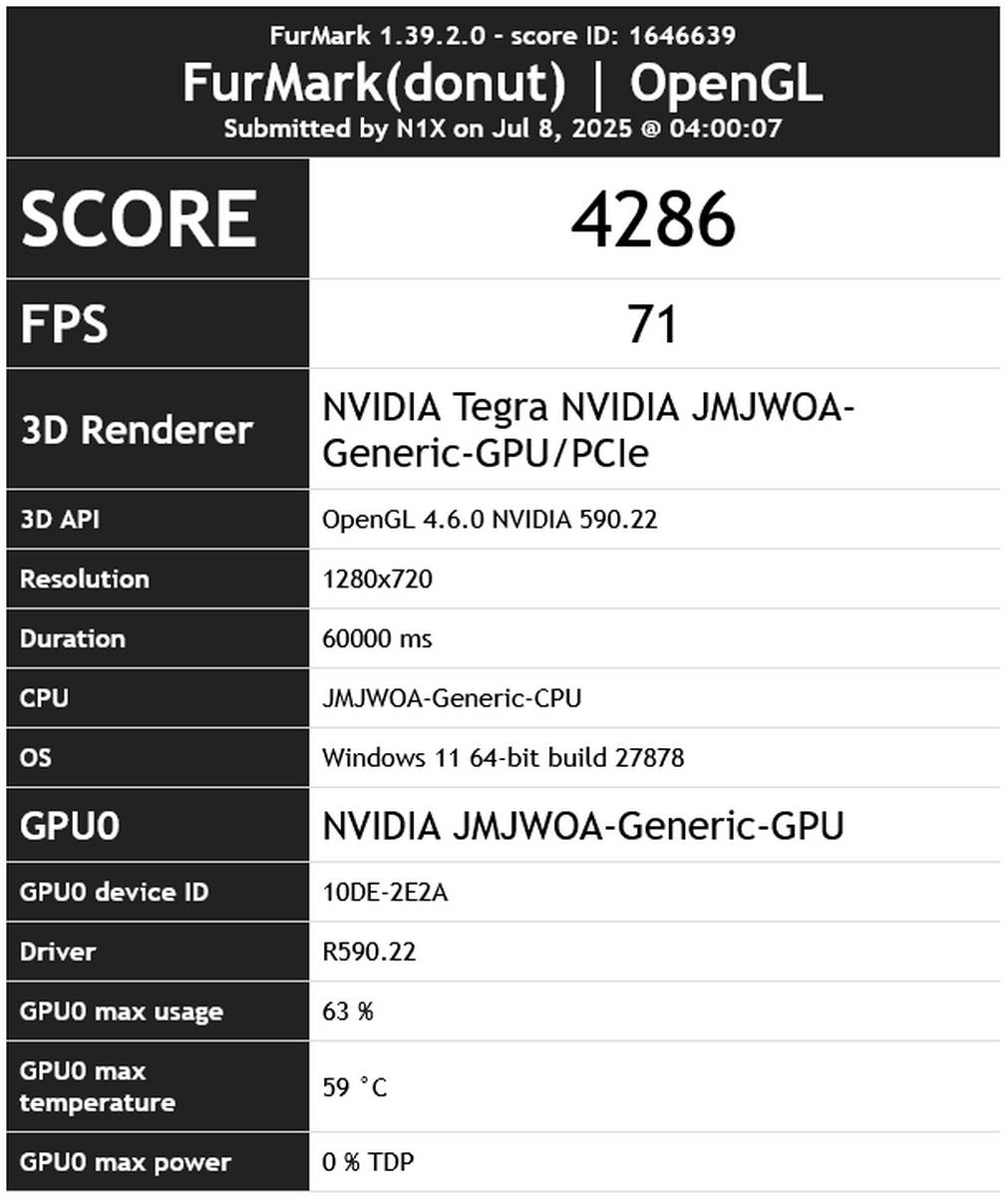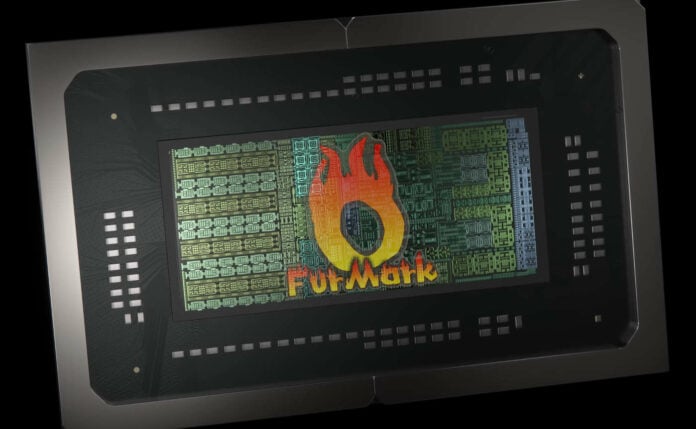Nvidia’s upcoming ARM-based processor has been spotted in the FurMark test database, delivering RTX 2060 levels of performance. Unlike previous leaks, this time the chip is running on Windows 11, indicating that partners are validating the chip on all platforms, helping Nvidia optimise the software stack before the rumoured 2026 launch.
Detected as Nvidia JMJWOA by FurMark, the N1X’s integrated GPU is seemingly only capable of delivering 4,286 points, or 71fps at 720p resolution. This is a very low result considering that the N1X is said to carry 6,144 CUDA cores, which is equivalent to a desktop RTX 5070. Yes, the chip runs at a much lower frequency and power target – estimated to be 120W – compared to the RTX 5070’s 250W, but offering half the performance of an RTX 5060 while housing a 60% bigger GPU is, well, quite concerning.
Though showing the N1X in a brighter light compared to the recent Geekbench OpenCL leak, these results are still far from what we would expect from such a chip. That said, these are neither official performance claims nor third-party benchmarks, so take them as is.
Furthermore, the chip is still under development, so the OS may not be capable of taking full advantage of its strengths. The cooling can also be a limiting factor, though if the temperature reported by FurMark is correct, that shouldn’t be an issue. Also worth noting that FurMark isn’t what we would call a full-on, accurate benchmark, despite offering a performance test.

Aside from the lower resolution, which may not stress the GPU hard enough, the software also reported that the it barely reached 63% usage at 59°C. This could be a protection mechanism as new GPUs tend to throttle down when detecting these so-called power virus stress tests.
Lastly, the test was conducted on a Windows 11 system using the 590.22 graphics drivers. These are set to be the first drivers to discard support for older GPU architectures such as Kepler and Maxwell. In other words, these are not final drivers, thus they may not be optimised to unlock the full potential of the N1X.


